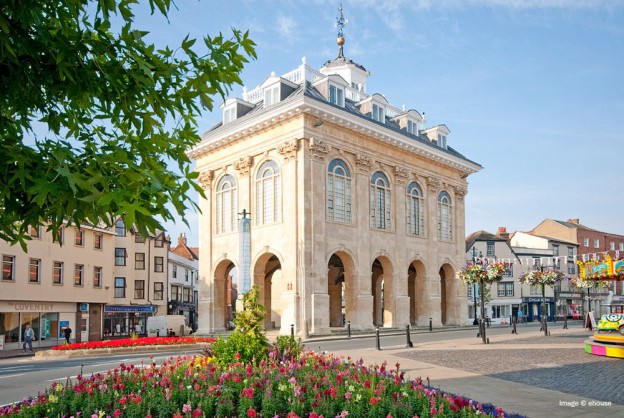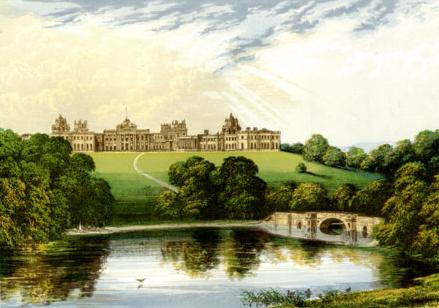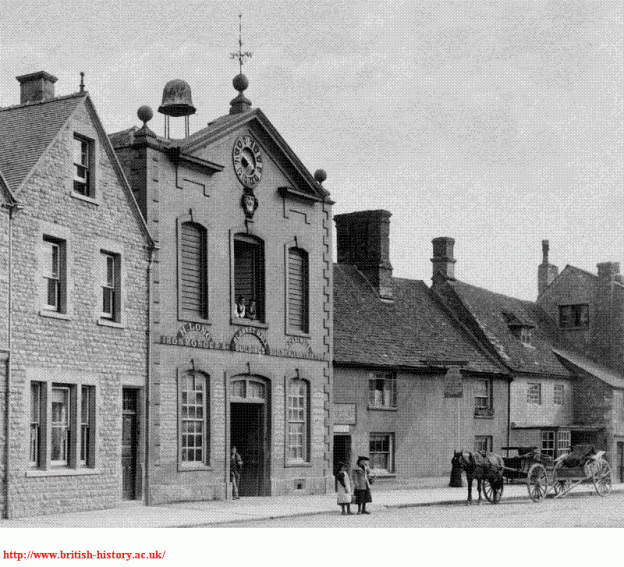At our February meeting Jane Bowen, the curator of the Abingdon Museum, presented an illustrated talk on the restoration of the County Hall. The official reopening, by the Duke of Gloucester, was in March 2013 after extensive repair and refurbishment. Overall the project cost about £3million, with half coming from the Heritage Lottery Fund. Jane gave examples of the other fund raising activities which in total raised £1.7 million.
The County Hall, a Grade1 listed building and described by Pevsner as one of the finest Town Halls in England, was in a parlous state: crumbling and loose stonework, leaking roof, unsafe electrics and very poor heating and thermal insulation. The building is owned by the District Council but under the guardianship of English Heritage. The latter supplied no funding but did apply certain restrictions on the update, including no lift to be installed to the top of the building. The £3 million has been spent on conservation, restoration and building improvements. Double glazing has been installed, no mean feat for windows 3m high. New electrics, lighting, security and heating have all been installed and the roof and flagpole made safe. During the restoration work original 17th century paintwork was revealed on the fine door at the top of the internal stairs. The basement has been transformed with a new café and educational room and the restoration of the Crossley engines originally installed in 1907 to pump the town’s water supply to a tank in the roof of the building to generate increased delivery pressure.
The first floor gallery has been impressively redesigned to give a flexible exhibition space with clear and simple explanatory panels. A particular exhibition concerns the MG factory and Jane described the delicate engineering project necessary to introduce a car through the narrow opening windows facing the Market Square. Another major exhibit tells the Story of the continuous inhabitation of Abingdon since the Iron Age. There are now also new showcases in the refurbished attic where an exhibition on WW1 will open in August.



